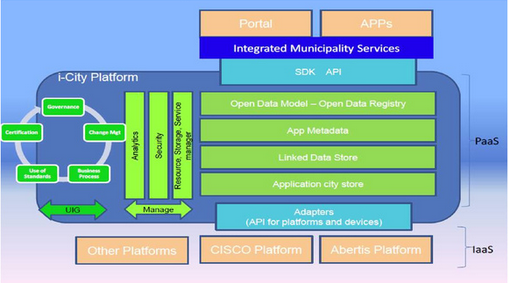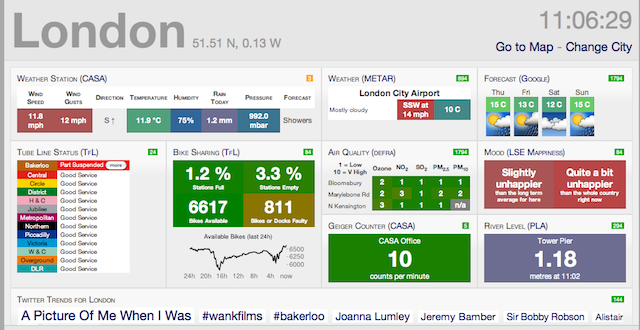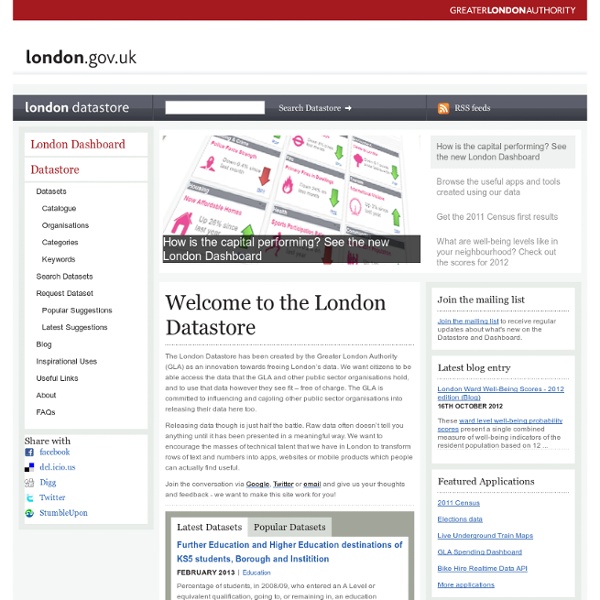|
The concept of data platforms has garnered a lot of coverage over the past few years and the City as a Platform is one that has wide traction in the “Smart City” space. It’s an idea that has been widely promulgated by service integrators and large consultancy firms. This idea has been adopted into the thinking of many cities in the UK, increasingly by local authorities who have both been forced by central government diktat to open their data and who are also engaging with many of the large private companies who sell infrastructure and capabilities and with whom they may have existing contractual arrangements. Standard interpretations of city as platform usually involve the idea that the city authority will create the platform into which it will release its data. It then seeks the integration of API’s (both external and internal) into the platform so that theoretically the user can access that data via a unified City API on which developers can then create products and services. Some local authorities seek to monetise access to this API while others see it as a mechanism for encouraging the development of new products and services that are of value to the state but which have been developed without direct additional investment by the state thereby generating public good from the public task of collecting and storing data. This concept of city as platform integrated by local authorities appears at first glance to be a logical, linear and achievable goal but in my view completely misunderstands a number of key factors; 1. The evolution of the open data/big data market 2. Commercial and Technical realities 3. Governance and bureaucracy I’ll explore these below. The London Datastore is often referred to as a city platform and it has certainly been recognised as a success in terms of outcomes - the wide deployment of various apps such as travel apps which reduce friction for commuters and are spawning a whole new ecosystem of SME’s in London. The visualisation of data which has assisted the academic and research community. The publication of crime data which allows citizens better understand the challenges facing their areas and the integration of data across different boroughs which gives a London wide perspective. The City Dashboard created by CASA in UCL is a great example of what can be done when a city releases its data. But the London Datastore is not a platform. It is a website to which static datasets can be uploaded. For most authorities and certainly for the GLA itself its largest data asset base are static files (usually CSV) which require little technical resource to publish. It is worth noting that the cost of the London Datastore was circa £16,000 and no additional staff were recruited to the GLA for the scoping, development and deployment of the London Datastore (apart from some developer days which were paid to hire a developer to build the website in Drupal). The code for the website is open source and can be freely reused by anyone who wanted to replicate it in their own city. Nor did this take time once the political commitment had been made. The project started scoping in October 2009 and launched on the 5th January 2010 with 50 datasets and a further 150 datasets were published to the website by the end of January 2010. No additional technical training was required for the Data Management Asset Group (GIS and statistical staff) who simply uploaded the datasets as part of business as usual. So the first steps are simple, easily achieved and have no technical barriers. That’s iteration one of open data for a city and that’s achievable in a few short months - not years. Had the London Datastore tried to adopt the platform model (as opposed to the website model) then it would have been impossible to achieve this early start. By the time the London Datastore launched, TfL, for example, were not in a position to confirm how they would release their data, how the API would be configured for data feeds and it took some months for them to open up the access to real time data. When that happened the London Datastore did not seek to integrate their API into the Datastore it simply “pointed” to the real time feeds and timetables which could be downloaded by the developers directly from the TfL developer portal. The advantage to pointing to the real time data feeds for London and for City Hall is that it would be impossible for City Hall to provide service level agreements to the developer community on its API. Integrating different data sources from external bodies is complicated to the degree that different sources can have different licensing models. While open standards and policies are important they are not always clearly worked out. A centralised city API would have put the responsibility for the data delivery at the feet of City Hall and not at the feet of the data providers themselves who have robust monitoring and delivery mechanism with 24/7 service. Put simply if I am a developer or small SME building a product or service on a centralised API and something happens to that city API at 11.00 on a Saturday night - will the local authority be able to respond? Will it offer 24/7 services? Does it have the in-house technical capability to act in an agile manner? It’s not been my experience as a former local authority official that this is how local authority technical teams are constructed. Static data sets are rarely updated at the rate of churn of real time data. Most are updated quarterly or even annually in some cases, so the service provision to the technologist is radically different in this context. The wrong number on a spreadsheet of say environmental data is not going to cause the same difficulty to a product or service in terms of time needed to correct - its not likely to knock out an app that over half a million people have downloaded and depend on for their travel information on a daily basis. The London Datastore was and is both a website and a leadership function using the Mayoral authority to bring other public sector providers into the open data space. It’s leadership paved the way and the centralised location for the data (on the surface) makes it LOOK like a platform but the technical and commercial reality is that it is a federation of its own datasets and links which hopefully makes the user journey for the developer a little more easy to navigate. It also acted as a broker between developers and technologists helping them navigate their way through large bureaucratic structures because that is what public officials are good at and technologists shouldn’t have to be. Since the evolution of the London Datastore there are easier ways to do things and a data market is emerging with vastly lower costs often payable on a subscription basis. There are many small SME’s operating in the open data space who operate at vastly lower costs than large system integrators can offer. This is precisely the SME market and economic stimulus that was behind the Mayoral initiative in London and should be happening in cities throughout the UK. Open the data and let 1,000 flowers bloom and over time SME’s will emerge into credible and solid open data service providers. I declare an interest here with my startup TransportAPI which has six people but now, as a data aggregator for public transport, is providing all of Heathrow Airports public transport data. It is also providing data to Transport for London and Network Rail. The difference between taking data from a city api and from a transport aggregator like TransportAPI is that we offer data as a service - we clean up and stabilise data, we monitor the service, we have clear and open service level agreements that offer discount on down times and that provide value added services. This is what has evolved in the market through the London Datastore initiative. The city does not need to provide the API itself - it needs to bring its datasets (static and simple) to the market and then let the market evolve new business models. It is the service level that is required that is so completely forgotten in the current debate around City as a Platform. You can build a product or service in an experimental way on the cityAPI you can bring your product to proof of concept - but you cannot scale on an API that does not have ongoing and 24/7 service provision and you have to provide that service at a cost that recognises the price point that the market can bear. If you are hoping to sell an app for £1.69 you have to sell a hell of a lot of them to make a business and every penny spent on a service that a large company or the city could provide is going to kill your route to market. So in a few easy steps here is what local authorities in cities need to do: 1. Do it - release what you have in machine readable form on an open source website with clear policies on reuse. If you don’t know what they are then talk to the Open Data Institute. 2. Do more - get any public bodies with whom you have a relationship in the public sector to upload their static data in machine readable form. 3. Do even more - use your authority as a city leader to encourage anyone in the data market (transport authorities, utility companies) to join your ecosystem. Convince them of the benefit to the city and the citizen and then use your website to point to their open API’s. Familiarise yourself with all of the new providers who have come into the ecosystem and who can provide agile and cost effective products and services. 4. Stop using outsourced IT as an excuse. If you have outsourced your IT then make a distinction between digital/data and IT. IT is kit and tin - data is digital and yours. And if that does not work make it clear to your supplier that their intransigence and crippling contracts are a poor offering for your citizens and that when it comes to the next contract negotiation you will be seeking out SME’s who can do this really well and for a fraction of the cost with better results for your citizens. That’s it really. It’s not hard, its not resource intensive and it doesn't cost a lot of money. I’ve seen figures of up to £200,000 for Data Platforms but if you follow the model suggested above you can build a really nice open source website to start and get the ball rolling for a maximum of £20,000 (and that’s being really generous and allowing for some nice design). Probably less because in the end technologists don’t really care what the site looks like they just want the data. Update: Since publishing Tim O'Reilly sums it up very nicely in his response
2 Comments
2/14/2014 04:53:41 am
Excellent post Emer, thanks for this.
Reply
2/14/2014 12:20:32 pm
great! have you seen what we're doing here?
Reply
Your comment will be posted after it is approved.
Leave a Reply. |
Details
Categories
All
Archives
August 2023
|



 RSS Feed
RSS Feed